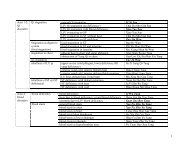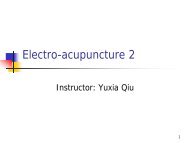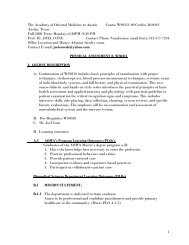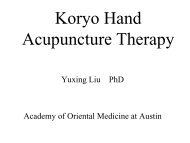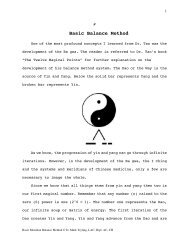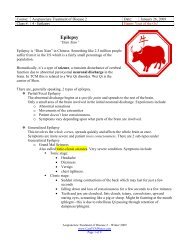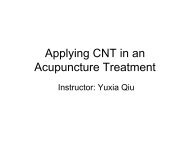SCALP ACUPUNCTURESCALP ACUPUNCTURE - CatsTCMNotes
SCALP ACUPUNCTURESCALP ACUPUNCTURE - CatsTCMNotes
SCALP ACUPUNCTURESCALP ACUPUNCTURE - CatsTCMNotes
You also want an ePaper? Increase the reach of your titles
YUMPU automatically turns print PDFs into web optimized ePapers that Google loves.
Venous drainage<br />
<br />
<br />
<br />
<br />
The veins of the scalp freely anastomose with one<br />
another and are connected to the diploic veins of the<br />
skull bones and the intracranial dural sinuses through<br />
several emissary veins. The emissary veins are<br />
valveless. The veins of the scalp accompany the<br />
arteries and have similar names.<br />
The supratrochlear and supraorbital veins drain<br />
the anterior region of the scalp. These 2 veins unite<br />
to form the angular vein at the medial angle region<br />
of the eye and continue further as the facial vein.<br />
The superficial temporal vein descends in front of<br />
the auricle and enters the parotid gland. It joins the<br />
maxillary vein to form the retromandibular vein.<br />
The anterior division of the retromandibular vein<br />
unites with the facial vein to form the common<br />
facial vein, which then drains into the internal<br />
jugular vein.<br />
The posterior auricular vein joins the posterior<br />
division of the retromandibular vein to form the<br />
external jugular vein.<br />
The occipital vein terminates in the suboccipital<br />
venous plexus, which lies beneath the floor of the<br />
upper part of the posterior triangle.




